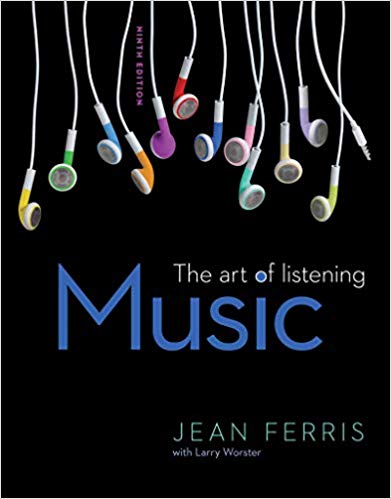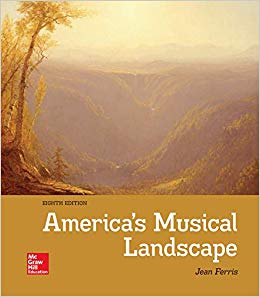Description
Test Bank For Music The Art of Listening 9th Edition by Jean Ferris
Chapter 03
Melody
Multiple Choice Questions
1. A melody consists of one or more parts that are called
A. sequences.
B. sections.
C. cadences.
D. phrases.
2. The stopping points that “punctuate” melodic phrases are called
A. pauses.
B. rests.
C. periods.
D. cadences.
3. The melodic form of “Row, Row, Row Your Boat” is:
A. a a
B. a b
4. The melodic form of the “Jingle Bells” refrain is:
A. a a b
B. a a b b’
C. a b a b’
D. a b a b
5. The melodic form of “Deck the Halls” is:
A. a a b b
B. a a b b’ (modified)
C. a a b a
D. a a b a’ (modified)
6. A written melody forms a linear pattern on the staff called the
A. curve.
B. contour.
C. angle.
D. line.
7. When the pitches of a melody lie close to one another on the staff, the melodic line is smooth or
A. conjunct.
B. disjunct.
C. lyrical.
D. vocal.
8. When the pitches of a melody are widely separated, the melodic line is
A. conjunct.
B. disjunct.
C. lyrical.
D. vocal.
9. A melodic and/or rhythmic pattern that is repeated many times is a(n)
A. animato.
B. portato.
C. ostinato.
D. obligato.
10. An example of a melodic sequence occurs in the beginning of
A. “Row, Row, Row Your Boat.”
B. “Jingle Bells.”
C. “Deck the Halls.”
D. “Three Blind Mice.”
11. A melody is sometimes referred to as a
A. tune.
B. pitch.
C. motive.
D. cadence.
12. A short melodic idea that sounds fragmentary is a
A. tune.
B. theme.
C. motive.
D. sentence.
13. A melody with a song-like character is
A. lyrical.
B. thematic.
C. monotonic.
D. monomelodic.
14. A recurring melody in a movement, a section of a movement, or an entire composition is called a
A. tune.
B. theme.
C. motive.
D. sentence.
15. The distance from any note on a keyboard to its nearest neighbor in either direction is a(n)
A. half step.
B. whole step.
C. octave.
D. fifth.
16. A whole step is the same interval as how many half steps?
A. one
B. two
C. three
D. four
17. The smallest interval traditionally used in Western music is the
A. quarter tone.
B. half step.
C. whole step.
D. octave.
18. Major and minor scales each contain
A. five half steps and two whole steps.
B. five whole steps and two half steps.
C. four half steps and three whole steps.
D. four whole steps and three half steps.
19. The ascending major scale pattern is
A. W H W W H W W
B. W W H W W W H
C. W H W W W H W
D. W W H W W H W
20. The ascending minor scale pattern is
A. W H W W H W W.
B. W W H W W W H.
C. W H W W W H W.
D. W W H W W H W.
21. The first and last note of either the major or minor scale is called the
A. supertonic.
B. subtonic.
C. diatonic.
D. tonic.
22. The tonic note of the scale upon which a composition is based is also the name of the __________ in which the piece is written.
A. note
B. pitch
C. key
D. tone
23. The chromatic scale divides the octave into
A. whole steps.
B. whole steps and half steps.
C. half steps.
D. none of the above.
24. Melodies based on the major or minor scales always lead to and conclude on the
A. supertonic.
B. tonic.
C. mediant.
D. submediant.
25. A five-tone scale within the range of an octave is called the
A. diatonic.
B. subtonic.
C. supertonic.
D. pentatonic.
26. One melody that can be played on the black keys of the piano is
A. “Deck the Halls.”
B. “Joy to the World.”
C. “Merrily We Roll Along.”
D. “Jingle Bells.”
True / False Questions
27. A melody is a succession of tones logically conceived so as to make musical sense.
TRUE
28. A sequence is the repetition of a melodic phrase at the same pitch level.
FALSE
29. All cadences convey the same degree of arrival or finality.
FALSE
30. Rhythmic patterns, phrase structure, and contour are some of the qualities that distinguish one melody from another.
TRUE
31. Two half steps comprise one whole step.
TRUE





Be the first to review “Test Bank For Music The Art of Listening 9th Edition by Jean Ferris”